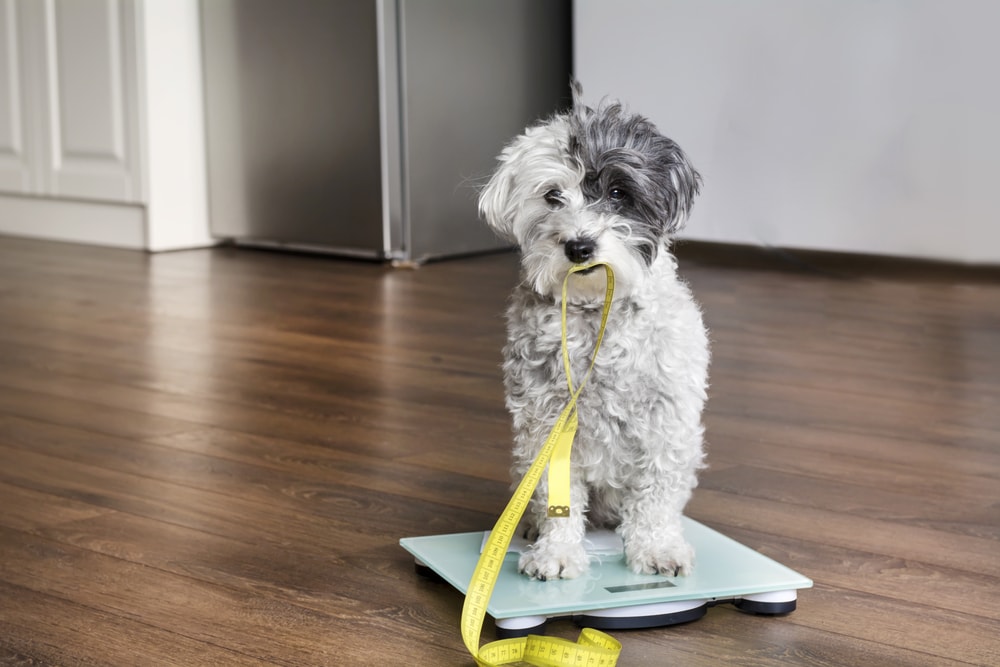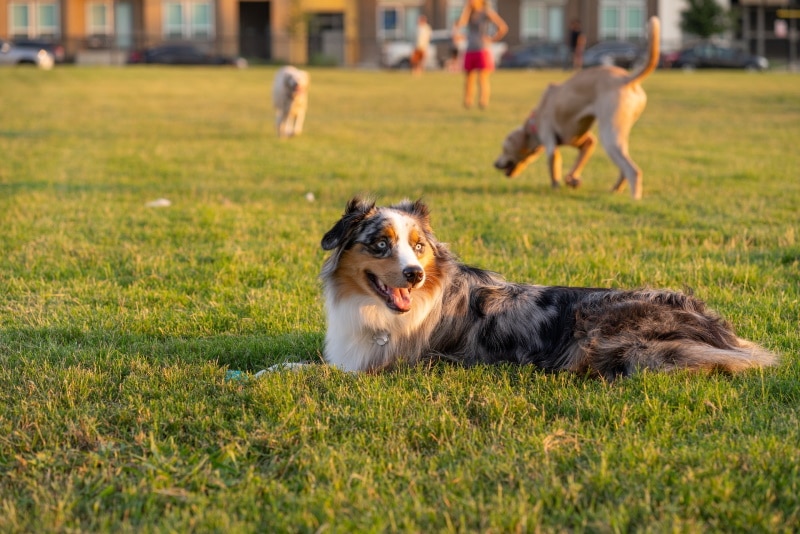How to Treat Sunburn in Dogs: 5 Possible Ways
By Ashley Bates
Updated on
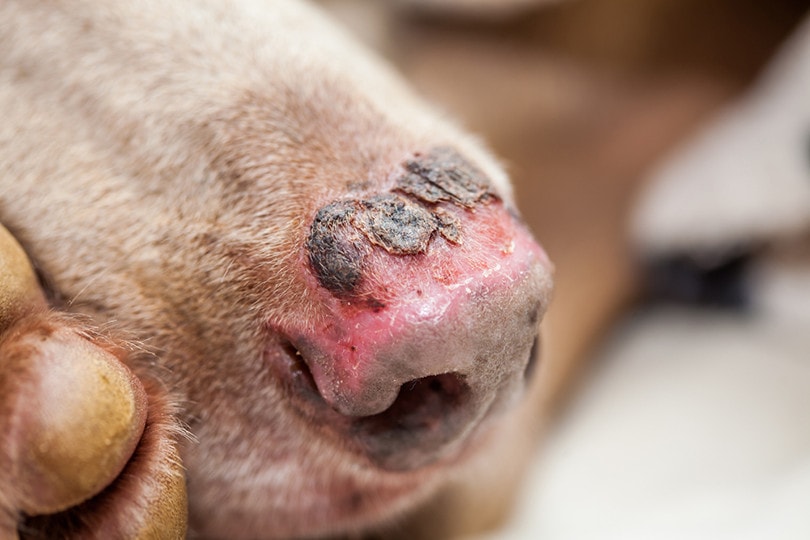
Click to Skip Ahead
It might be a little unusual to consider. Sunburns and dogs don’t really seem like they would belong in the same sentence. However, not only is it entirely possible, but it can also be painful and even dangerous for your dog.
Some breeds are more susceptible to sunburns than others, but that doesn’t change the fact that being in direct sunlight for extended periods can really make things terrible for your pooch. If you’ve noticed that your dog has sunburn, there are plenty of ways you can treat it at home.
However, in extreme cases, we definitely recommend taking your dog to the veterinarian. We’ll explain when you can be treated at home instead of when they should probably see a professional.
Can You Use Human Sunscreen on Dogs?
You should never use products designed for humans to treat sunburns on dogs. When sunburn treatments for humans are designed, they are explicitly designed for our species alone. Your dog skin requires different pH-balanced formulas and will require specific treatment.
Many human sunscreens¹ contain a toxic component called zinc oxide and para-aminobenzoic acid. Even humans can have issues with sunscreen, as some brands contain harmful chemicals and ingredients that can adversely affect your skin. Your dogs are even more susceptible to these chemicals and should be kept entirely away. Use dog safe sunscreen instead.

What Dogs Are More at Risk for Sunburns?
After you take your dog to the groomer, their hair is significantly shorter than it typically is. Or, if you have a thin-haired, light-colored, or hairless dog breed, they can be at greater risk than others. If you have a double-coated dog like a Husky or German shepherd, they might overheat and dislike the warm weather, but they are much less likely to get a sunburn, as their skin is often not exposed at all.
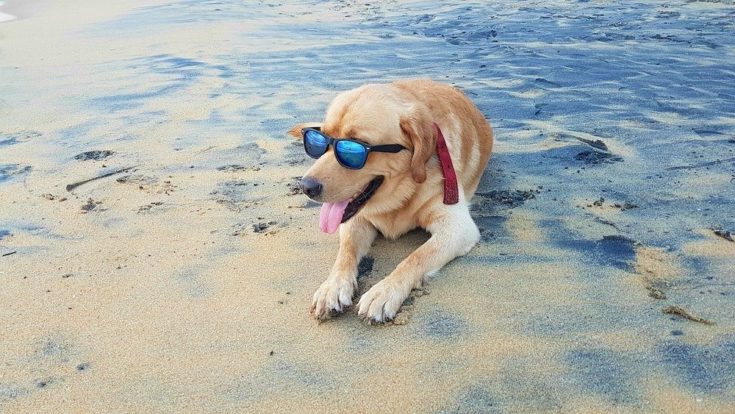
Some dogs typically sleep belly up. But they are relaxing outside on their back for long periods, and then they can get sunburn on the soft parts of their belly.
- Recently groomed dogs
- White dogs
- Light colored fur dogs
- Partially hairless dogs
- Completely hairless dogs
- Dogs who lay belly up
First, we would like to point out that we are not replacing medical advice. If you see that your dog has a significant sunburn, you should always consult with your veterinarian for treatment options right away. For mild cases, these are some things you can expect to use if you find yourself in this situation.
How to Detect Sunburn in Dogs
It should be pretty easy to detect a sunburn in your dog. Like humans, their skin will get red and be tender to touch. Your dog might shy away from petting or whimper and seek seclusion. If they’ve had a sunny day out, check them over for any visible or noticeable signs of sunburn, such as on the nose, bellies, ears and overall skin of thinner-haired dogs.
If you have a dog with a thinner coat or no coat at all, you must ensure you offer protection from extreme heat situations. You can have your dog wear a protective clothing layer, ensure they are only in shaded areas and apply topical protection.
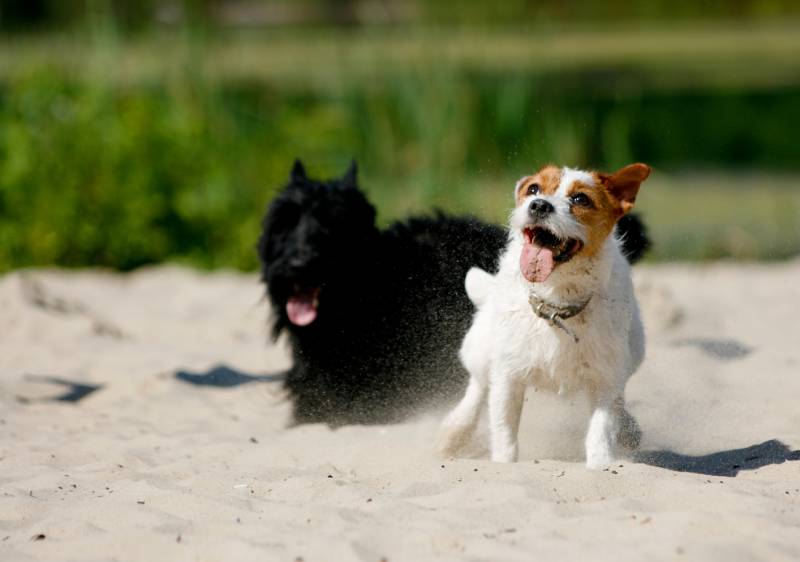
How to Treat Sunburn in Dogs
1. Cold Compress
If your dog is suffering from a sunburn, you can ease their suffering by using a cold compress. Whether it is an ice pack, frozen bag of peas, or whatever cool item you have on hand, you can take it and apply it to your dog’s affected areas to provide relief. Make sure to wrap it in a tea towel first so that the frozen item doesn’t stick to, or damage the skin.
2. Sun Avoidance
If possible, it’s best to keep your dog entirely out of the sun for a few days. That means walking them in shaded spaces whenever you go outside to prevent direct sunlight exposure.

3. General Care
Your pup might just need some extra loving for the day. You can let them relax in the comfortable space, so they get to feeling better faster without much commotion. Monitor appetite, thirst and toileting. Offer plenty of fresh water to drink.
4. Vet Attention
If the sunburn is severe, or widespread, you notice blistering and peeling or there is any indication of heat stroke, it is time to seek vet attention urgently. Because sunburns are still very much a burn, if it gets bad enough, it can be very painful, get infected or result in dehydration. Some infections require antibiotic treatments that only your vet can prescribe.
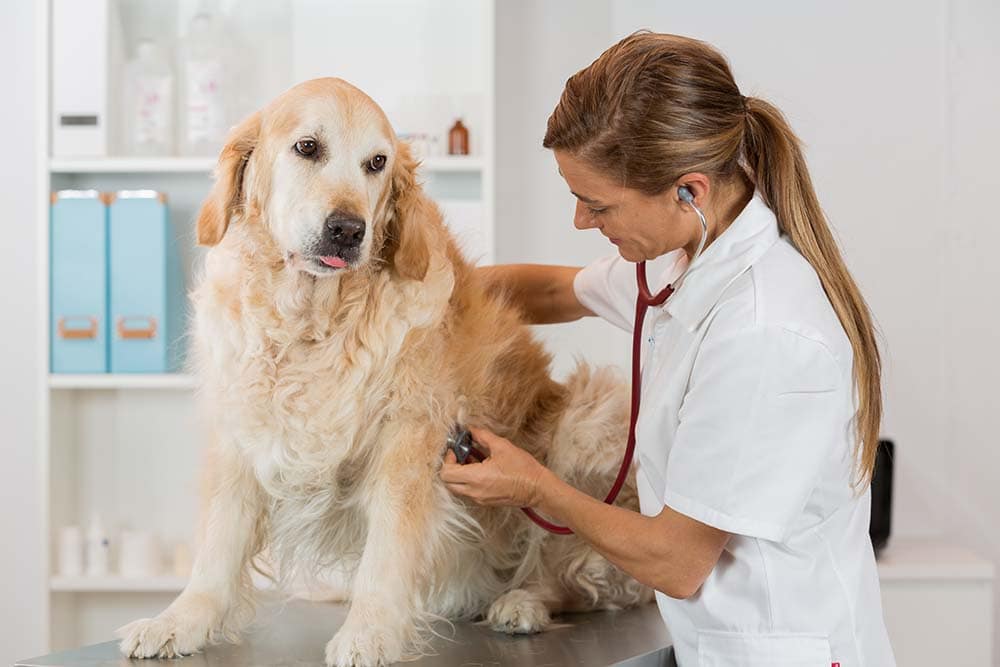
5. Topical Treatments
There are over-the-counter topical treatments you can put on your dog’s sunburn. You can apply it to your dog’s burn areas to soothe the skin, whether it is a medicated salve or moisturizing canine-specific cream.
Burns from Hot Surfaces
Dogs can also get thermal burns in places besides their noses and sensitive bellies. Probably the most common burns you see in the summertime for dogs are paw pads. The pads of your dog’s feet are designed to work on rugged terrain and heated surfaces but not scorching. If you can’t stand comfortably with no shoes on, you should not expect your dog to.
Symptoms of pavement burn in dogs include:
- Limping
- Whining or whimpering
- Excessive foot licking
- Redness
- Swelling
- Skin peeling
- Avoiding the use of the affected paw
- Infection
If a dog’s paw pads are burned, it is imperative to seek medical attention. Burns like these can get infected quickly, especially when your dog constantly walks on surfaces directly.
If you suspect your dog has any burn associated with their paw pads, it can be very painful, but it’s generally easy to heal once you have the right care.
If you’re walking with your dog in areas with hot pavement, cement, concrete, and brick paths, make sure to take caution and try to walk in shaded or grassy areas when possible. If you cannot avoid these areas, you might try carrying your dog to another spot or make trips only seconds long when it’s unavoidable. Paw pads that come in contact with extreme temperatures can encounter damage quickly. Avoid the hottest times of the day and consider dog boots if you frequently walk on hot sidewalks.
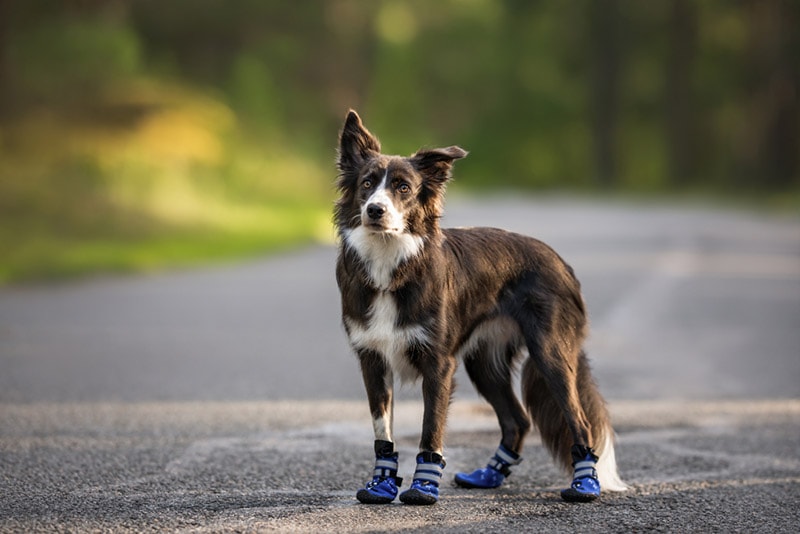
When Is a Sunburn Dangerous?
Sunburn is dangerous as it may be combined with heat stroke. When your dog’s temperature rises too much it is very serious for them and they will need urgent care at the veterinary clinic. Any dog that seems sore, unwell, or has obviously damaged skin should be seen by a vet.
Unfortunately, humans can really suck sometimes. Sunburns are most reported among dogs who are tied out in direct sunlight for long periods. Some dog owners choose to have dogs tied out to a leader cable where they have to provide shelter, but not necessarily shade.
Animal cruelty cases are never-ending no matter where you fall on the map. Animal laws are different in separate states, cities, and towns. If you are concerned about the welfare of a dog contact your local animal control.
Dogs can get severe sunburns or heat stroke from being left out in scorching temperatures with no adequate place to escape. In these cases, some dogs require extensive veterinary treatment too. If you ever witness any act of cruelty towards a dog, you must notify the authorities.

Skin Cancer in Dogs
Believe it or not, some dogs are prone to skin cancers just like humans. It is most often seen in white or very light-colored dogs, but it can happen to just about any with direct exposure to the sun. If you notice your dog quickly sunburns or is at higher risk for developing skin cancer, we recommend keeping your dog in the shade as much as possible, away from direct sunlight.
Some vests and outer gear can protect your dog’s skin from the sun, but it might be too hot in some regions of the world or times of the season for such attire.
- Squamous Cell Carcinoma
- Malignant Melanoma
- Hemangiosarcoma
If skin cancer for your dog sounds serious, we must stress it is. Even if your dog doesn’t get directly visibly sunburned, too much exposure to sunlight over time can significantly impact your canine companion. So if you have a hairless, short-coated, or light-colored dog, you must limit their time outdoors in the direct sunlight.
 Summing Up
Summing Up
So now you know all about how the sun can affect your dog. You probably don’t have as much to worry about if you have a canine at a lower risk for sunburns, such as a double-coated dog like a husky, German Shepherd, pug or otherwise. However, they can still be at risk if they spend hours in direct sunlight, especially on vulnerable areas like the soft parts of their tummy and noses.
If you have a light or thin-haired dog, you must use the proper precautions to ensure they don’t get severe burns. If you see a possible neglect situation and are worried about a dog in direct sunlight, don’t hesitate to reach out to animal services in your area.
See also:
Featured Image Credit: Anamaria Mejia, Shutterstock


